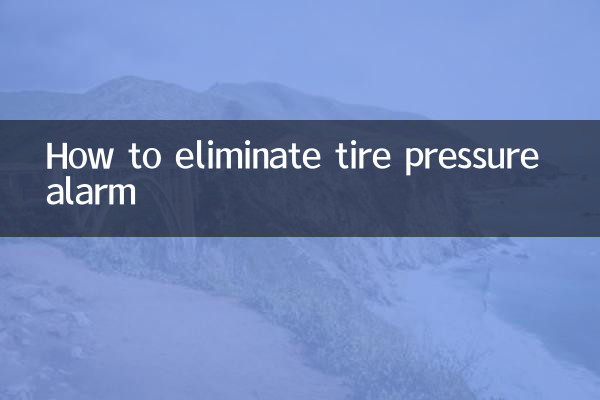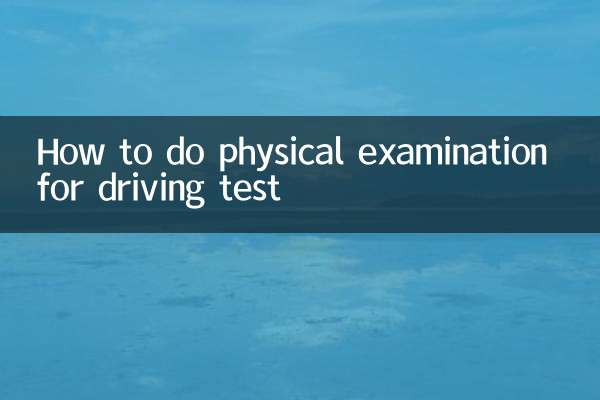How to Eliminate a Tire Pressure Warning: A Comprehensive Analysis and Practical Guide
The tire pressure warning system (TPMS) is one of the important safety features of modern cars, but the warning light often confuses car owners. This article will combine the hot topics on the Internet in the past 10 days, structurally analyze the common causes and solutions of tire pressure alarms, and provide practical data reference.
1. Analysis of common causes of tire pressure alarms

| Reason type | Proportion | Typical performance |
|---|---|---|
| flat tire | 43% | Slow or rapid tire pressure drop |
| seasonal temperature changes | 28% | A collective alarm was issued after the temperature dropped sharply |
| Sensor failure | 17% | False alarm or continuous alarm |
| Uneven tire pressure | 12% | Single tire alarm |
2. 6 steps to eliminate tire pressure alarm
Step 1: Immediately perform a safe parking inspection
When the warning light comes on, stop in a safe area as soon as possible. Pay attention to distinguish between yellow warning lights (need to check as soon as possible) and red warning lights (stop immediately).
Step 2: Visually inspect tire condition
| Check items | normal state | abnormal behavior |
|---|---|---|
| Tread | No damage | Nails, cracks |
| sidewall | No bulge | Bulge deformation |
| valve | intact | Loose air leakage |
Step 3: Accurately measure tire pressure
Use a digital tire pressure gauge to measure and refer to the vehicle's standard value (usually marked on the door frame or inside the fuel tank cap). Recommended tire pressure data for popular models:
| car model | Front wheel(psi) | Rear wheel(psi) |
|---|---|---|
| Toyota Corolla | 32 | 30 |
| Volkswagen Lavida | 34 | 34 |
| HondaCR-V | 33 | 33 |
Step 4: Fill or deflate the air to adjust
If the tire pressure is insufficient, use an inflation device to increase it to the standard value; if it is too high, slowly deflate it. Note:
• Measured with cold tires (parked for more than 3 hours or driven no more than 2 kilometers)
• Spare tires also need regular inspection (standard values are usually higher than regular tires)
Step 5: Reset the TPMS system
After adjusting the tire pressure, most vehicles need to be reset manually:
| Brand | Reset method |
|---|---|
| toyota | Long press the central control TPMS button |
| Volkswagen | Through the car system menu |
| Nissan | Press the brake 3 times with the ignition switch ON |
Step 6: Continuous Monitoring
After completing the adjustment, drive 3-5 kilometers to see if the warning light goes out. If the alarm occurs repeatedly, it may be:
• Slow air leakage (soap water test recommended)
• Sensor battery is exhausted (life span is typically 5-7 years)
• System failure (professional diagnosis required)
3. Answers to recent hot questions
Q: What should I do if there are frequent alarms in winter?
A: For every 10°C drop in temperature, tire pressure drops approximately 1 psi. It is recommended to reserve buffer 3-5psi higher than the standard value in cold areas.
Q: How to solve the alarm after modifying the wheel hub?
A: It is necessary to reprogram the TPMS sensor or install an adapter ring, which costs about 200-800 yuan.
4. Prevention Suggestions
1. Check tire pressure at least once a month
2. Always check the spare tire pressure before a long journey
3. Do wheel alignment every 2 years
4. Pay attention to sensor protection when replacing tires
Through the above structured solutions, more than 90% of tire pressure alarm problems can be solved by yourself. If you encounter a persistent alarm that cannot be resolved, it is recommended to go to a professional maintenance center for inspection in time to ensure driving safety.

check the details

check the details